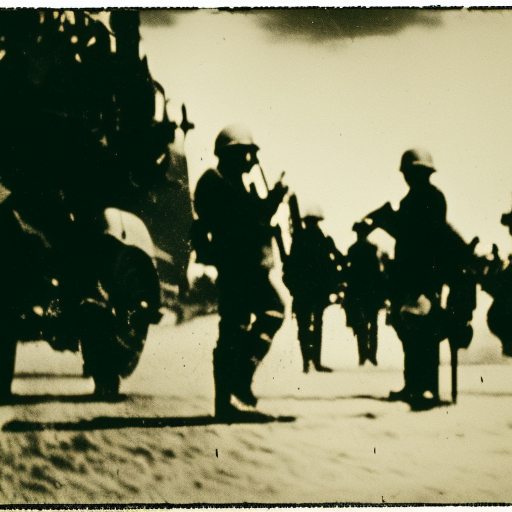Summary:
The Western Allied invasion of Germany was a military operation conducted by the Western Allies during World War II. It aimed to defeat Nazi Germany and bring an end to the war in Europe. The invasion began in late 1944 and continued into 1945, with the Western Allies launching a series of offensives across the Western Front. These offensives ultimately led to the defeat of Nazi Germany and the end of the war in Europe.
Background:
By late 1944, the Western Allies had successfully liberated France and pushed the German forces back to the borders of Germany. The Allies, led by the United States, Great Britain, and Canada, had been planning a full-scale invasion of Germany for some time. The invasion aimed to weaken the German military and bring about the collapse of the Nazi regime.
The Invasion:
The Western Allied invasion of Germany began with Operation Market Garden in September 1944. This operation aimed to secure a series of bridges in the Netherlands and pave the way for an advance into Germany. However, the operation did not achieve its objectives, and the Allies were forced to reconsider their strategy.
In December 1944, the Germans launched a major counteroffensive in the Ardennes region of Belgium and Luxembourg, known as the Battle of the Bulge. The German offensive initially caught the Allies off guard and resulted in heavy casualties. However, the Allies were able to regroup and repel the German advance, ultimately pushing the German forces back.
The Final Offensives:
In early 1945, the Western Allies launched a series of offensives across the Western Front. The first major offensive was Operation Veritable, which aimed to clear the German forces from the Rhineland. This operation was followed by Operation Plunder, which involved a crossing of the Rhine River and the establishment of a bridgehead on the eastern bank.
With the Rhine River crossed, the Western Allies continued their advance into Germany. They faced stiff resistance from the German forces, but their superior numbers and firepower eventually overwhelmed the Germans. The Allies captured key cities such as Cologne, Essen, and Düsseldorf, and pushed deeper into German territory.
The Defeat of Nazi Germany:
By April 1945, the Western Allies had reached the heart of Germany. They launched a final offensive known as the Battle of Berlin, which aimed to capture the German capital. The battle was fierce, with heavy casualties on both sides. On April 30, 1945, Adolf Hitler committed suicide in his bunker in Berlin.
With the fall of Berlin, the German forces began to surrender en masse. On May 7, 1945, Germany officially surrendered, bringing an end to the war in Europe. The Western Allied invasion of Germany had achieved its objective of defeating Nazi Germany and liberating Europe from the grip of fascism.
Conclusion:
The Western Allied invasion of Germany was a crucial military operation that played a significant role in the defeat of Nazi Germany. Through a series of offensives across the Western Front, the Allies were able to push deep into German territory, capturing key cities and ultimately capturing Berlin. The defeat of Nazi Germany marked the end of World War II in Europe and paved the way for the post-war reconstruction and the establishment of a new world order.












